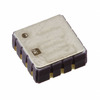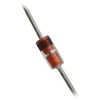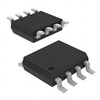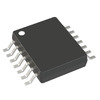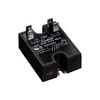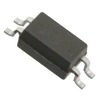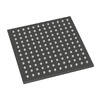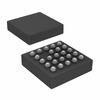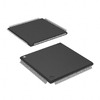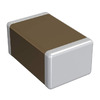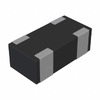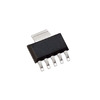LM317 Voltage Regulator : Pinout, Circuit, Comparison with LM7805, and Datasheet Overview
The LM317 adjustable voltage regulator is a widely used component in power supply design. It is known for its ability to provide stable output voltages between 1.25V and 37V, with a current capacity of up to 1.5A. Its versatility in industrial applications and features like thermal overload protection, current limiting, and wide voltage adjustment range make it a staple in many electronics projects. This article explores the key features of the LM317, compares it with alternative regulators like the LM7805 and LT3080, and examines its various practical applications, from power supply design to battery chargers and LED drivers.Catalog

Overview of LM317
The LM317 represents a highly adaptable three-terminal voltage regulator, crafted by several renowned Integrated Circuit (IC) manufacturers. This component enjoys widespread usage in DC-regulated power supply circuits because of its aptitude for delivering adjustable and stable voltage levels.
The LM317 can deliver an output voltage that varies from 1.25 V to 37 V and adapts to different current requirements, enhancing its application range. It can supply more than 1.5 A of current to the load, promoting its use in various projects.
Internal current limiting balances load fluctuations. Thermal shutdown prevents overheating, promoting longevity. Safe area compensation ensures stable operation under diverse conditions. Stability under fluctuating input conditions maintains consistent performance. In actual scenarios, the LM317 is embraced in a diverse array of electronic ventures and commercial uses. You can utilize its adjustability for custom voltage needs in DIY kits, prototyping, and industrial designs. Specifically, it is frequently used in bench power supplies, battery chargers, and LED drivers.
LM317 Pin Configuration

|
Pin Number |
Pin Name |
Description |
|
1 |
Adjust |
These
pins adjust the output voltage |
|
2 |
Output
Voltage (Vout) |
The
regulated output voltage set by the adjust pin can be obtained from this pin |
|
3 |
Input
Voltage (Vin) |
The
input voltage which has to be regulated is given to this pin |
Specifications of LM317
Here is the table content for the ON Semiconductor LM317T.
|
Type |
Parameter |
Details |
|
Lifecycle
Status |
Obsolete |
|
|
Last
Shipments |
(Last
Updated: 3 days ago) |
|
|
Contact
Plating |
Tin |
|
|
Mount |
Through
Hole |
|
|
Mounting
Type |
Through
Hole |
|
|
Package
/ Case |
TO-220-3 |
|
|
Number
of Pins |
3 |
|
|
Weight |
1.214012g |
|
|
Operating
Temperature |
0°C~125°C |
|
|
Packaging |
Tube |
|
|
Published |
2004 |
|
|
JESD-609
Code |
e3 |
|
|
Pbfree
Code |
Yes |
|
|
Part
Status |
Obsolete |
|
|
Moisture
Sensitivity Level (MSL) |
1
(Unlimited) |
|
|
Number
of Terminations |
3 |
|
|
ECCN
Code |
EAR99 |
|
|
Power
Rating |
20W |
|
|
Packing
Method |
RAIL |
|
|
Max
Power Dissipation |
20W |
|
|
Terminal
Position |
SINGLE |
|
|
Peak
Reflow Temperature (°C) |
235 |
|
|
Number
of Functions |
1 |
|
|
Terminal
Pitch |
2.54mm |
|
|
Time
@ Peak Reflow Temperature-Max (s) |
30 |
|
|
Base
Part Number |
LM317 |
|
|
Pin
Count |
3 |
|
|
Number
of Outputs |
1 |
|
|
Voltage
- Input (Max) |
40V |
|
|
Output
Voltage |
37V |
|
|
Max
Output Current |
1.5A |
|
|
Output
Configuration |
Positive |
|
|
Max
Output Voltage |
37V |
|
|
Number
of Regulators |
1 |
|
|
Min
Input Voltage |
4.2V |
|
|
Protection
Features |
Over
Temperature, Short Circuit |
|
|
PSRR |
75dB
~ 60dB (120Hz) |
|
|
Reference
Voltage |
1.3V |
|
|
Dropout
Voltage |
2V |
|
|
Dropout
Voltage1-Nom |
3V |
|
|
Min
Output Voltage |
1.2V |
|
|
Power
Supply Rejection Ratio (PSRR) |
60dB |
|
|
Min Current
Limit |
1.5A |
|
|
Load
Regulation-Max (%) |
5.80% |
|
|
Height |
9.15mm |
|
|
Length |
10.4mm |
|
|
Width |
4.6mm |
|
|
REACH
SVHC |
No
SVHC |
|
|
Radiation
Hardening |
No |
|
|
RoHS
Status |
RoHS
Compliant |
|
|
Lead
Free |
Lead
Free |
CAD Models for LM317
Symbol

Footprints
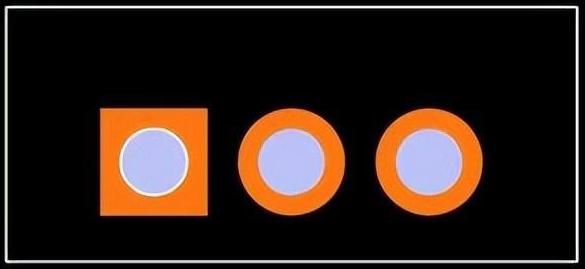
3D Models

Key Features of the LM317
|
Feature |
Description |
|
Adjustable
Output Voltage Range |
Adjustable
from 1.25V to 37V |
|
Maximum
Output Current |
Greater
than 1.5A |
|
Internal
Short-Circuit Protection |
Built-in
current limiting to prevent damage |
|
Thermal
Overload Protection |
Prevents
overheating by shutting down the regulator |
|
Output
Safe-Area Compensation |
Ensures
safe operation within the specified limits |
Applications of LM317
The LM317 finds its place in a myriad of applications due to its versatility and reliability. These uses range from positive voltage regulation to protecting circuits from reverse polarity and controlling motors.
Positive Voltage Regulation
In the realm of positive voltage regulation, the LM317 excels in delivering a consistent output voltage amidst fluctuations in input voltage or load conditions. You can turn to this regulator to stabilize voltage supplies for microprocessors and serious electronic components. The steady performance it ensures is basic for the optimal functioning of power-sensitive devices, thereby enhancing their performance and lifespan.
Variable Power Supplies
The LM317 shines in variable power supplies, admired for its capability to finely adjust output voltage through resistance variation. This flexibility is especially valued in experimental environments demanding diverse voltages for testing electronic components. You can regularly rely on the LM317 for providing adjustable power levels during prototyping or repair projects, making it a staple in their toolkits.
Current Limiting Circuits
In current limiting circuits, the LM317 guards sensitive components from overcurrent scenarios by setting precise current limits. This protection is dominant in applications like battery charging circuits, where controlling the charging currents is used to avoid battery degradation. By preventing excessive current flows, the LM317 contributes significantly to prolonging the lifespan of various devices.
Reverse Polarity Protection
Reverse polarity can wreak havoc on electronic circuits, but the LM317 paired with auxiliary components acts as a shield against such mishaps. This safeguard proves invaluable in automotive electronics and other power systems prone to accidental polarity reversals. The regulator’s role in these configurations underlines its importance in fortifying the robustness of power supply systems.
Motor Control
In motor control applications, the LM317 plays a key role by managing the voltage supplied to motors, directly influencing their speed and torque. This control is active in fields like industrial automation and robotics, where precise motor operation is required. Even in projects, such as remote-controlled vehicles, the LM317's robust performance is highly beneficial.
Consumer Electronics
The LM317 is omnipresent in consumer electronics, including desktop PCs and DVDs, where it maintains voltage levels within specified ranges. This consistency ensures reliable device performance and prevents functional anomalies, thereby improving your experience. Its widespread use in consumer devices attests to its effectiveness and reliability.
Alternatives to LM317
• LM7805
• LM7806
• LM7809
• LM7812
• LM7905
• LM7912
Implementing LM317
Using the LM317 as a variable voltage regulator involves a meticulous setup to maintain precise control over the output voltage. The procedure includes connecting the input voltage to the VIN pin and finely tuning the voltage at the ADJ pin using a resistor network. This configuration enables the desired output voltage at VOUT. Including a potentiometer in this potential divider circuit permits dynamic adjustments to the output voltage as needed.

To utilize the LM317 effectively, the output voltage (VOUT) can be determined with the equation
VOUT = 1.25 ×l(1 +(R2/R1))
Here, (R1) and (R2) are resistive components in the circuit, with (R2) often being a potentiometer. For example, if (R1) is 1kΩ and (R2) is a 10kΩ potentiometer, the output voltage can range from 1.25V to 10V.
The practical use of the LM317 goes beyond notional calculations. Fine-tuning the resistor values, especially using a potentiometer, requires insightful considerations for optimizing performance. Understanding load conditions and managing thermal aspects are required to ensure the stability and reliability of the regulator in diverse environments. Heat dissipation is a considerable factor affecting the LM317's performance. Applying proper heat sinking techniques can prevent overheating, which could otherwise lead to voltage regulation issues or damage to the component. The LM317's behavior under different load conditions impacts the overall output stability. Testing the regulator circuit under multiple load scenarios provides valuable insights into how load fluctuations influence the output voltage.
LM317 vs. LM7805
Adjustable vs. Fixed Output Voltage
The LM317 and LM7805 serve distinct roles due to their differing output capabilities, each bringing its unique appeal to the table. The LM317 caters to those craving flexibility with an adjustable output voltage ranging from 1.25V to 37V, a feature that's cherished in applications where variable voltage levels enhance performance. Conversely, the LM7805 stands out with its steadfast nature, delivering a fixed 5V output, earning its place in systems that thrive on stability and uniformity.
Current Output Capabilities
A notable benefit of the LM317 is its ability to support higher current outputs. This is mostly advantageous for scenarios demanding robust power delivery, offering reliability for more intensive projects. On the other hand, the LM7805, with its more straightforward design, generally manages lower current outputs. While this might seem limiting, it often perfectly suits fewer demanding applications, providing a simple yet effective solution.
Component Requirements
Using the LM317 for voltage adjustment requires additional components, such as resistors or potentiometers. This added complexity injects a layer of flexibility into the voltage regulation process but does necessitate a more thoughtful approach to design. In stark contrast, the LM7805's fixed output considerably streamlines circuit design. Minimizing the need for external components, enables quicker and more straightforward implementation, sparking a sense of ease and efficiency in the design process.
Comparable Parts
|
Part
Number |
Manufacturer |
Package
/ Case |
Number
of Pins |
Number
of Outputs |
Max
Output Current |
Min
Input Voltage |
Max
Input Voltage |
Min
Output Voltage |
Max
Output Voltage |
Dropout
Voltage |
View
Compare |
|
LM317T |
ON Semiconductor |
TO-220-3 |
3 |
1 |
1.5 A |
4.2 V |
40 V |
1.2 V |
37 V |
2 V |
LM317T VS
LM317KCS |
|
LM317KCS |
Texas
Instruments |
TO-220-3 |
3 |
1 |
1.5 A |
4.2 V |
40 V |
1.25 V |
37 V |
2 V |
LM317T VS
LM317KCS |
|
LM317T |
STMicroelectronics |
TO-220-3 |
3 |
1 |
1.5 A |
4.2 V |
40 V |
1.2 V |
37 V |
- |
LM317T VS LM317T |
|
LM217T |
STMicroelectronics |
TO-220-3 |
3 |
1 |
1.5 A |
4.2 V |
40 V |
1.2 V |
37 V |
- |
LM317T VS LM217T |
|
LM317KCT |
Texas
Instruments |
TO-220-3 |
3 |
1 |
1.5 A |
4.2 V |
40 V |
1.25 V |
37 V |
2 V |
LM317T VS
LM317KCT |
Datasheet PDF
LM317T Datasheets:
LM317KCS Datasheets:
LM317T Datasheets:
LM217T Datasheets:
Frequently Asked Questions [FAQ]
1. How does LM317 work?
The LM317 operates as an adjustable linear voltage regulator, providing meticulous control over output voltage via a feedback mechanism that employs a voltage divider composed of two external resistors. By altering the resistance values, the feedback voltage varies, consequently adjusting the regulator's output voltage. This approach is routinely utilized in electronics to derive different voltage levels from a single power supply, catering to applications ranging from microcontroller projects to industrial power systems. In practical scenarios, you may witness this during the design phase of electronic devices, where precise voltage regulation ensures reliable operation and mitigates unforeseen issues—emphasizing how serious accuracy and stability are in electronic circuits.
2. What is a LM317 used for?
The LM317 can be utilized for providing a stable output voltage, ensuring constant current regulation, facilitating battery charger designs, and acting as a major component in variable power supplies. Its ability to supply adjustable voltage is especially useful in various contexts. You can leverage it to power different sections of a circuit requiring variable voltage levels, ensuring compatibility and operational efficiency. Within these diverse practical setups, the LM317 demonstrates its versatility, reflecting its adaptability in myriad electrical environments.
3. What is the maximum input voltage of a LM317?
The LM317 supports a maximum input voltage of 40V and operates efficiently with an input-output voltage differential ranging from 3V to 40V. This characteristic broadens its applicability in various power supply setups, catering to both high and low-voltage demands. For example, this attribute proves to be invaluable when designing resilient power supply units where substantial input voltage variations may occur, enhancing design flexibility and ensuring dependable performance in actual applications.
4. What is the output voltage of an LM317?
The LM317 offers a flexible output voltage range from 1.25V to 37V, with a current delivery capability of up to 1.5A. This flexibility makes it a useful tool for customizing power solutions to meet specific requirements, from small-scale projects to large industrial applications. By utilizing its adjustable output, you can tailor the voltage supply to align with various electronic components' demands, optimizing performance and enhancing the longevity of electronic systems. Often in laboratory settings, the ability to precisely control voltage is paramount for achieving experimental accuracy and ensuring safety, showcasing the regulator's invaluable utility.
About us
ALLELCO LIMITED
Read more
Quick inquiry
Please send an inquiry, we will respond immediately.

TDA2003V Amplifier: Equivalent, Applications, and Datasheet
on October 15th
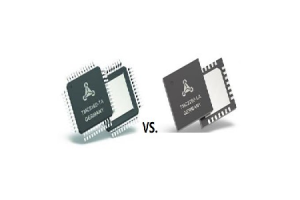
Breaking Down the Differences: TMC5160 vs. TMC2209 Stepper Drivers
on October 15th
Popular Posts
-

What is GND in the circuit?
on January 1th 2814
-

RJ-45 Connector Guide: RJ-45 Connector Color Codes, Wiring Schemes, R-J45 Applications, RJ-45 Datasheets
on January 1th 2396
-

Fiber Connector Types: SC Vs LC And LC Vs MTP
on January 1th 2008
-

Understanding Power Supply Voltages in Electronics VCC, VDD, VEE, VSS, and GND
on November 5th 1748
-

Comparison Between DB9 and RS232
on January 1th 1721
-

What Is An LR44 Battery?
Electricity, that ubiquitous force, quietly permeates every aspect of our daily lives, from trivial gadgets to life-threatening medical equipment, it plays a silent role. However, truly grasping this energy, especially how to store and efficiently output it, is no easy task. It is against this background that this article will focus on a type of coin cell battery that may seem insignificant on the...on January 1th 1672
-

Understanding the Fundamentals:Inductance Resistance, andCapacitance
In the intricate dance of electrical engineering, a trio of fundamental elements takes center stage: inductance, resistance, and capacitance. Each bears unique traits that dictate the dynamic rhythms of electronic circuits. Here, we embark on a journey to decipher the complexities of these components, to uncover their distinct roles and practical uses within the vast electrical orchestra. Inductan...on January 1th 1609
-

CR2430 Battery Comprehensive Guide: Specifications, Applications and Comparison to CR2032 Batteries
What is CR2430 battery ?Benefits of CR2430 BatteriesNormCR2430 Battery ApplicationsCR2430 EquivalentCR2430 VS CR2032Battery CR2430 SizeWhat to look for when buying the CR2430 and equivalentsData Sheet PDFFrequently Asked Questions Batteries are the heart of small electronic devices. Among the many types available, coin cells play a crucial role, commonly found in calculators, remote controls, and ...on January 1th 1482
-

CR2450 vs CR2032: Can The Battery Be Used Instead?
Lithium manganese batteries do have some similarities with other lithium batteries. High energy density and long service life are the characteristics they have in common. This kind of battery has won the trust and favor of many consumers because of its unique safety. Expensive tech gadgets? Small appliances in our homes? Look around and you'll see them everywhere. Among these many lithium-manganes...on January 1th 1466
-

What Is RF and Why Do We Use It?
Radio Frequency (RF) technology is a key part of modern wireless communication, enabling data transmission over long distances without physical connections. This article delves into the basics of RF, explaining how electromagnetic radiation (EMR) makes RF communication possible. We will explore the principles of EMR, the creation and control of RF signals, and their wide-ranging uses. The article ...on January 1th 1433


